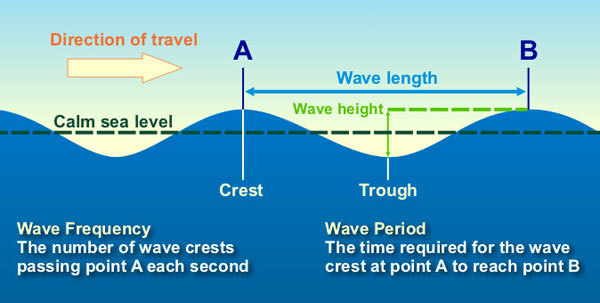9th Grade > Physics
SOUND MCQs
Total Questions : 57
| Page 3 of 6 pages
Answer: Option B. -> 343000 Hz
:
B
Given:
Speed of the sound, v=343ms−1
Wavelength, λ=0.1cm=0.001m
Let frequency be f.
Speed of the wave is given as the product of frequency and wavelength.
v=fλ
⟹f=343ms−10.001m
f=343000Hz
Frequency of the sound wave is 343000Hz.
:
B
Given:
Speed of the sound, v=343ms−1
Wavelength, λ=0.1cm=0.001m
Let frequency be f.
Speed of the wave is given as the product of frequency and wavelength.
v=fλ
⟹f=343ms−10.001m
f=343000Hz
Frequency of the sound wave is 343000Hz.
Answer: Option A. -> frequency
:
A
The pitch of the sound depends only on frequency. More the frequency, more will be the pitch or shrillness of the voice.
:
A
The pitch of the sound depends only on frequency. More the frequency, more will be the pitch or shrillness of the voice.
Answer: Option A. -> Only statement 1 is correct.
:
A
Sound waves require a medium to travel. Due to the absence of atmosphere on the surface of the Moon, there is no medium for the sound to propagate. The propagation of sound on the Moon is not related to the surface temperature of the Moon. Also, the Moon's surface is very cold.
Thus, the statement 1 is correct, but the statement 2 is incorrect.
:
A
Sound waves require a medium to travel. Due to the absence of atmosphere on the surface of the Moon, there is no medium for the sound to propagate. The propagation of sound on the Moon is not related to the surface temperature of the Moon. Also, the Moon's surface is very cold.
Thus, the statement 1 is correct, but the statement 2 is incorrect.
Answer: Option A. -> 5 s
:
A
Given:
Wavelength of sound wave, λ=40cm=0.4m
Time period, T=0.0005s
Distance travelled, s=4km=4000m
Let speed of sound wave be v.
Speed of a wave is the product will be:
v=λT
v=0.4m0.0005s
v=800ms−1
Let the time taken for the wave to travel distance s be t.
From definition of speed,
v=st
t=sv
t=4000800=5s
:
A
Given:
Wavelength of sound wave, λ=40cm=0.4m
Time period, T=0.0005s
Distance travelled, s=4km=4000m
Let speed of sound wave be v.
Speed of a wave is the product will be:
v=λT
v=0.4m0.0005s
v=800ms−1
Let the time taken for the wave to travel distance s be t.
From definition of speed,
v=st
t=sv
t=4000800=5s
Answer: Option B. -> False
:
B
The particles in a wave only oscillate about their position. They do not move at the speed of the wave, nor do they need to move in the same direction as that of the wave.
:
B
The particles in a wave only oscillate about their position. They do not move at the speed of the wave, nor do they need to move in the same direction as that of the wave.
Answer: Option A. -> electric signals
:
A
The cochlea of theear converts pressure variations in the air (sound) into electric signals. These signalstravel to the brain through auditory nerves,due to which we are able to hear it.
:
A
The cochlea of theear converts pressure variations in the air (sound) into electric signals. These signalstravel to the brain through auditory nerves,due to which we are able to hear it.
Answer: Option A. -> SONAR
:
A
The device which uses ultrasonic waves to measure the distance, direction and speed of underwater objects is known as SONAR. SONAR stands for Sound Navigation and Ranging.
It is used to find depth of the sea and to locate underwater hills, valleys, icebergs, sunken ships etc.
RADAR uses electromagnetic waves for echolocation. Also, it must be noted that RADAR is not useful underwater because electromagnetic waves die in water very quickly.
:
A
The device which uses ultrasonic waves to measure the distance, direction and speed of underwater objects is known as SONAR. SONAR stands for Sound Navigation and Ranging.
It is used to find depth of the sea and to locate underwater hills, valleys, icebergs, sunken ships etc.
RADAR uses electromagnetic waves for echolocation. Also, it must be noted that RADAR is not useful underwater because electromagnetic waves die in water very quickly.
Answer: Option B. ->
False
:
B
:
B

Longitudinal waves are the type of waves in which the particles vibrate along the direction of propagation of wave. Transverse waves are those in which the particles vibrate perpendicular to the direction of propagation of wave. In case of ocean waves, the particles vibrate perpendicular to the direction of propagation of wave, so it is a transverse wave.
Answer: Option B. ->
Wavelength is inversely proportional to frequency
:
B
λ=vf
where:
λ: Wavelength
f: Frequency
v: Speed of light in the given medium
In a medium, speed is constant.
⟹λ∝1f
Hence, wavelength is inversely proportional to frequency in a medium.
:
B
λ=vf
where:
λ: Wavelength
f: Frequency
v: Speed of light in the given medium
In a medium, speed is constant.
⟹λ∝1f
Hence, wavelength is inversely proportional to frequency in a medium.
Answer: Option B. ->
80000 Hz
:
B
Given:
Speed of sound wave, v=1600 ms−1
Wavelength, λ=2 cm=0.02 m
Let f be the frequency of the wave.
Speed of sound is given by:
v=fλ
f=1600 ms−10.02 m=80000 Hz.
Frequency of the sound wave is 80000 Hz.
:
B
Given:
Speed of sound wave, v=1600 ms−1
Wavelength, λ=2 cm=0.02 m
Let f be the frequency of the wave.
Speed of sound is given by:
v=fλ
f=1600 ms−10.02 m=80000 Hz.
Frequency of the sound wave is 80000 Hz.
















